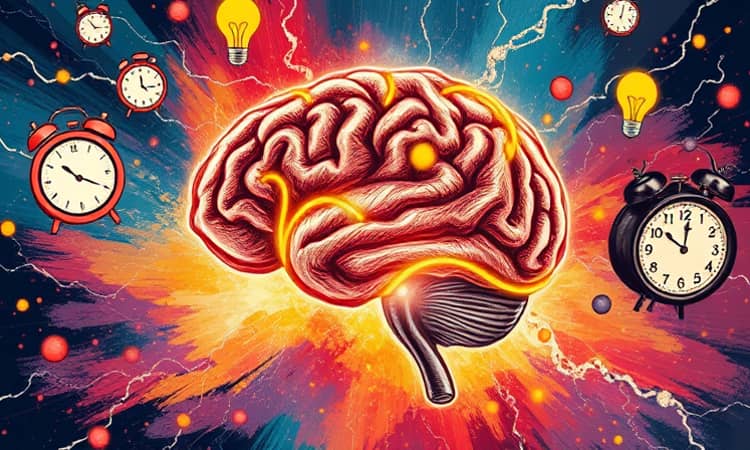Productivity is not simply about doing more; it’s about doing the right work at the right time. In this article, we explore how cutting-edge neuroscience reveals the keys to maximizing mental energy, focus, and creativity. By understanding your brain’s mechanisms, you can harness its power to achieve peak performance and lasting satisfaction.
At the heart of productivity lies the delicate balance between cognitive function and emotional regulation. When managed effectively, this balance allows us to work smart, avoid burnout, and produce our best ideas.
Understanding Productivity Through Neuroscience
By definition, productivity measures the measure of how much work you complete within a set period. However, productivity isn’t just about clocking hours; it’s about engaging the brain’s highest capacities—reasoning, planning, and execution—in a sustainable way.
The prefrontal cortex serves as headquarters for prefrontal cortex and executive functions, directing attention, suppressing distractions, and orchestrating complex problem-solving. When this region is overtaxed, decision-making falters, stress rises, and mental fatigue sets in.
Researchers have identified “flow state” as the most productive mental condition. In flow, full attention and skill combine for seamless performance, creativity peaks, and time seems to slip away. Yet flow is fragile, easily disrupted by even minor interruptions.
The Hidden Cost of Multitasking and Distraction
Contrary to popular belief, multitasking actually damages output. The brain cannot process multiple demanding tasks simultaneously; it resorts to rapid task switching, which is neither efficient nor accurate.
Studies using the OSpan (Automated Operation Span) test demonstrate that the presence of a smartphone hinders working memory, even when the device is silenced. Just seeing an incoming notification can reduce your effective cognitive capacity by up to 20 percent.
By comparing these modes, we see that single-task focus consistently outperforms splintered attention, preserving mental clarity and reducing stress.
Unlocking Cognitive Flow for Peak Performance
Flow is not accidental; it emerges when challenges and skills align perfectly. To cultivate flow, you must design your environment thoughtfully and manage your mental energy.
- Eliminate nonessential stimuli to preserve cognitive bandwidth.
- Set clear, measurable goals to guide your effort.
- Match tasks to your skill level to avoid boredom or overwhelm.
- Use timed work sessions to create immersive intervals.
By deliberately crafting these conditions, you prime your mind for moments of deep absorption where creative breakthroughs are most likely.
Strategies to Optimize Your Brain’s Natural Rhythms
Your brain’s peak performance waxes and wanes throughout the day due to natural circadian rhythms and ultradian cycles. Respecting these fluctuations can supercharge your output.
- Identify your highest-energy periods and schedule demanding work accordingly.
- Incorporate short breaks every 50–90 minutes to avoid cognitive depletion.
- Use movement, fresh air, or light stretching to reset attention.
- Maintain consistent sleep and wake times to stabilize energy rhythms.
Adapting your schedule to your body’s clock not only increases efficiency but also enhances well-being, by preventing the exhaustion and irritability that comes from ignoring natural cycles.
Enhancing Focus with Mindfulness and Externalization
Neuroplasticity means your brain can learn new, more productive habits. Mindfulness and meditation are powerful tools for strengthening attention networks and reducing anxiety.
Visualization—mental rehearsal of tasks—can reinforce neural pathways, making focus feel more automatic over time. Coupling these practices with external tools helps clear internal clutter.
- Create daily to-do lists to offload tasks from working memory.
- Use time-blocking or calendar slots to map out priorities.
- Establish morning and evening rituals to signal transitions.
By externalizing cognitive load, you free up precious mental capacity for deep, creative thinking instead of mundane reminders.
Building Sustainable, Science-Backed Habits
Lasting productivity gains come from consistent practice and gradual refinement. A single hack won’t transform your output overnight, but steady application of science-backed strategies for lasting change will reshape your brain’s default patterns.
Start by choosing one or two techniques—such as focused time blocks or a daily mindfulness break—and practice them until they become effortless. Then layer in additional elements, like environmental tweaks or strategic caffeine intake, always monitoring what works best for you.
Remember, your productivity journey is uniquely yours. By respecting the science of your brain, you can craft a personalized system that honors both your aspirations and your well-being. Embrace this approach, and watch as focus deepens, stress diminishes, and your capacity for meaningful work soars.
References
- https://emailgistics.com/the-science-of-productivity-how-to-hack-your-brain-for-success/
- https://www.atlassian.com/blog/productivity/productivity-tips-cognitive-science
- https://www.healthcareitleaders.com/blog/science-backed-brain-hacks-to-boost-productivity/
- https://www.verywellmind.com/multitasking-2795003
- https://www.corvel.com/insights/the-neuroscience-of-work-performance
- https://www.journals.uchicago.edu/doi/full/10.1086/691462
- https://www.sciencefocus.com/the-human-body/how-to-be-more-productive














